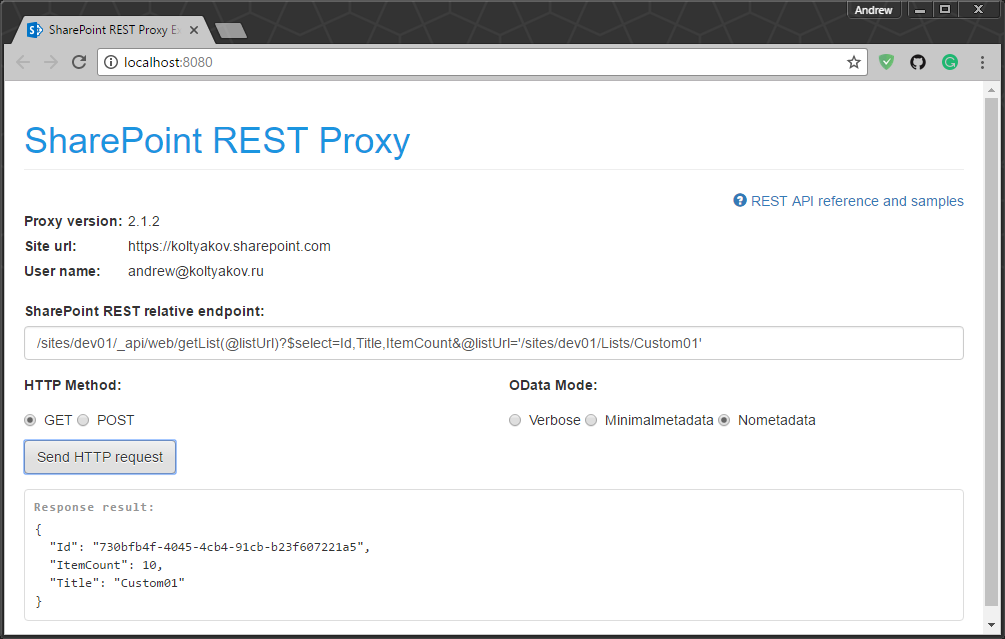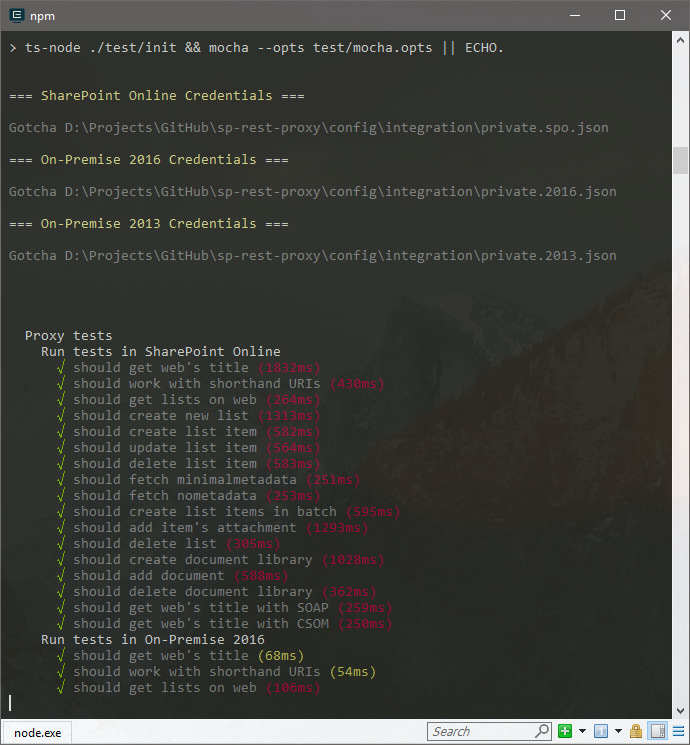sp-rest-proxy-airportyh v2.4.1
sp-rest-proxy - SharePoint REST API Proxy for Node.js and Express local serve
Allows performing API calls to local Express application with forwarding the queries to a remote SharePoint instance.
This concept was created to show how it could be easy to implements real world data communications for SharePoint Framework local serve mode during web parts debug without deployment to SharePoint tenant.
Supported SharePoint versions
- SharePoint Online
- SharePoint 2013
- SharePoint 2016
Support proxying
- REST API
- CSOM requests
- SOAP web services
- Static resources
Proxy modes
- API Proxy server
- Socket gateway server
- Socket gateway client
Socket proxying allows to forward API from behind NAT (experimental).
How to use as a module
1. Install NPM module in the project:
npm install --save-dev sp-rest-proxyor
yarn add sp-rest-proxy --dev2. Create server.js with the following code:
const RestProxy = require('sp-rest-proxy');
const settings = {
configPath: './config/private.json', // Location for SharePoint instance mapping and credentials
port: 8080, // Local server port
staticRoot: './static' // Root folder for static content
};
const restProxy = new RestProxy(settings);
restProxy.serve();Configuration parameters cheatsheet
3. Add npm task for serve into package.json:
"scripts": {
"serve": "node ./server.js"
}Check if the path to server.js is correct.
4. Run npm run serve.
5. Provide SharePoint configuration parameters.
6. Test local API proxy in action.
How to develop
Install
1. Clone/fork the project:
git clone https://github.com/koltyakov/sp-rest-proxy2. CMD to the project folder.
3. Install dependencies:
npm installor
yarn install4. Build:
npm run build5. Run the server:
npm run serveor serve in TypeScript directly
npm run ts-servePrompts credentials for a SharePoint site.
6. Navigate to http://localhost:8080 (or whatever in settings)
7. Ajax REST calls as if you were in SharePoint site page context:

8. Tests.
npm run test
Authentication settings
The proxy provides wizard-like approach for building and managing config files for node-sp-auth (Node.js to SharePoint unattended http authentication).
- SharePoint 2013, 2016:
- Addin only permissions
- User credentials through the http ntlm handshake
- Form-based authentication (FBA)
- SharePoint Online:
- Addin only permissions
- SAML based with user credentials
- ADFS user credentials (works with both SharePoint on-premise and Online)
For more information please check node-sp-auth credential options and wiki pages.
Auth settings are stored inside ./config/private.json.
Some additional info
sp-rest-proxy works with PnP JS Core (not POST request, as there is an endpoint transformation during POST request in PnP JS Core):

Use cases
- Client side applications development with local serve, but real data from SharePoint
- SharePoint Framework in local workbench with real data
- Client applications integration test automation scenarios


